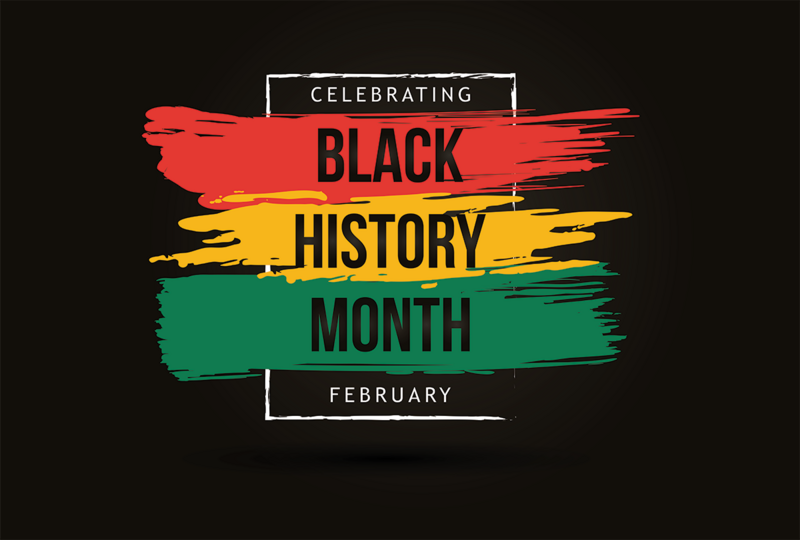
The month of February honors the central role in U.S. history and contributions of Black Americans. The celebration first began back in 1926, then known as “Negro History Week.” Harvard historian Carter G. Woodson and other important Black Americans established the Association for the Study of Negro Life and History (ASNLH, but now known as the Association for the Study of African American Life and History, ASALH). The organization was dedicated to the research and promotion of accomplishments by Black Americans and other individuals of African ancestry.
Woodson believed that young African Americans in the early 20th century were being excluded from learning more about their heritage, as well as the achievements from their ancestors. He created the Negro History and Literature Week in 1924 to get the message out and in turn took on the task of reaching through a wider audience. Schools and other organizations across the country supported Woodson’s initiative and worked to provide materials and resources to the growing audience. This inspired schools and other communities to organize local festivities, found history clubs and host lectures and performances.
In the following decades, more support grew across the country for yearly celebrations that recognized “Negro History Week.” During the civil rights movement, it evolved into Black History Month in many college campuses. It was not until 1976 that it was officially recognized by President Gerald Ford.
As we reflect on the importance of the contributions of Black Americans, it is important to also highlight the role of Black Americans in the commitment and activism to help expand the movement for people with disabilities.
The Civil Rights movement took place in the 1960s and rightfully inspired many disability rights advocates, who used similar methods to engage in their own legal rights as members of society. From the beginning, Black disabled activists, as well as Black supporters without disabilities, played a significant role in the movement.
One of these Black disabled activists was Lois Curtis. Curtis was diagnosed with a cognitive disability as a child and was sent to a regional hospital, where she remained until she was 29 years old. Curtis’ team believed that she could live independently in her community, but lack of funding from the state was a reality she faced. After suing the state of Georgia, her case Olmstead v. L.C, eventually reached the Supreme Court in 1999. The Supreme Court ruled unjustified segregation of people with disabilities had violated the Americans with Disabilities Act (ADA) and it was therefore deemed unconstitutional for Curtis to be forced to remain in the institution when she was capable of living in the community.
The case paved the way for thousands of other people with disabilities to live in communities and it also required that public entities provide community-based services.
Another Civil Rights leader, Brad Lomax, merged two movements together towards a fight for equity across the country. As a person with a disability, Lomax founded a chapter of the Black Panther Party (BPP) and organized an African Liberation Day demonstration in the 1970s. Because of his multiple sclerosis, he was unable to access public transit without having to be physically lifted and thus became involved in the disability rights movement.
Working alongside the founder of the Center for Independent Living in Berkley, California, he went on to open another similar site in Oakland with support from his BPP community. Through his efforts and activism, he was able to increase awareness of the disability rights movement and established partnerships in the community.
In 1977, when disability rights activists staged a sit-in in the San Francisco federal building, Lomax was there to urge the government to implement Section 504 of the Rehabilitation Act. With his fellow activists, they camped outside the building for weeks. With support from the BPP community, the group was able to travel to Washington D.C. to further their protest and the group succeeded. On April 28th, 1977, Section 504 was signed into law.
In Berkeley, not too far from Lomax, was Donald Galloway, a strong advocate for the rights of people with disabilities and proponent for the inclusivity of people of color in the disability rights movement. Galloway became blind after an accident in his teens but that did not prevent him from continuing in his activism efforts where he became a member of a local NAACP chapter and a member of the National Federation for the Blind.
He worked at the Berkeley Center for Independent Living and also worked for the Colorado Governor’s Council on Disability in Denver. When he was called for jury duty service in 1991, he arrived at the courtroom with his guide dog and was dismissed by the judge because he felt that he would not be able to fulfill the duties as a juror. He sued the district court and the ruling found that automatically disqualifying a blind person or blind people from jury duty was unconstitutional. Juries are meant to represent a cross-section of people, including people with disabilities.
Galloway’s work and the work of many other Black Americans has helped to ensure that these voices become a part of the disability rights movement and conversation. Continued efforts in both communities can help to ensure that people with disabilities, no matter what their background is, helps to maintain their constitutional and civil rights.